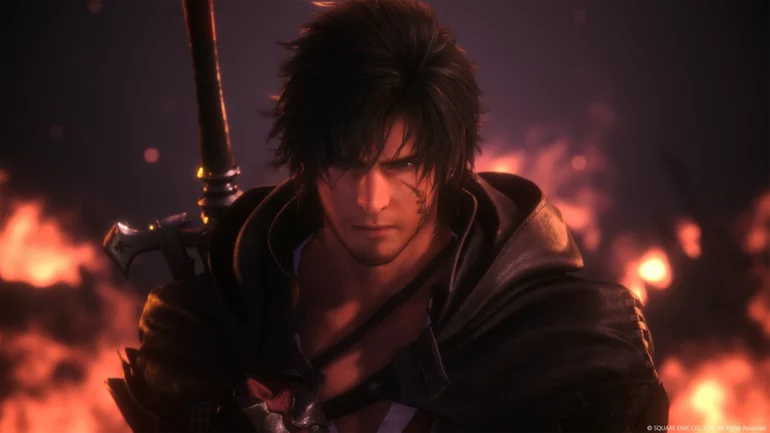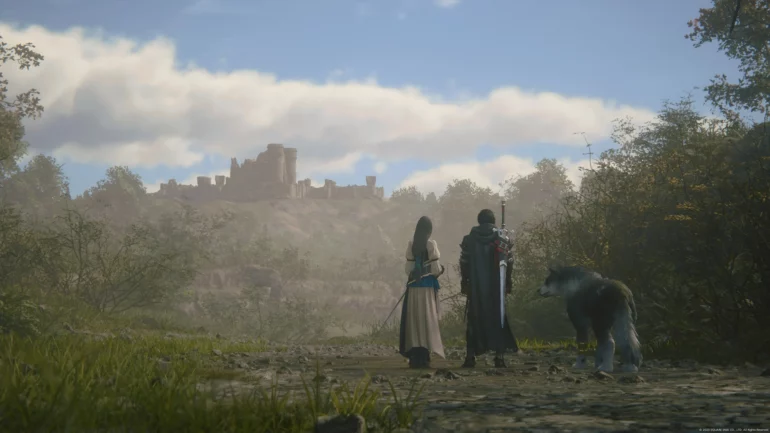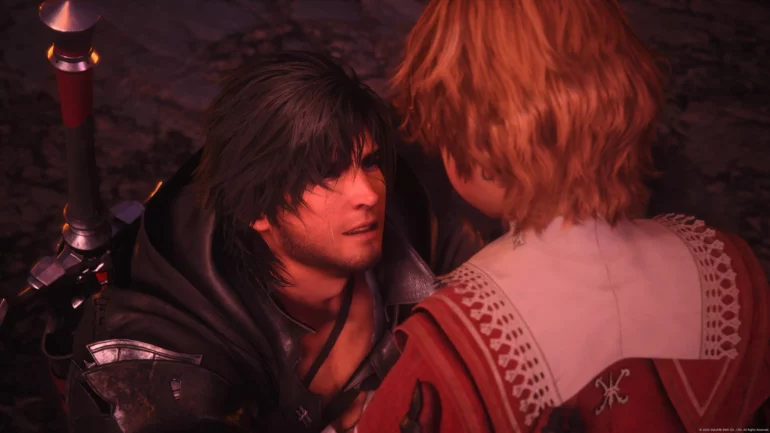Final Fantasy has existed for a considerable time and has become known for its unique and varied characteristics. It has created some of the most iconic elements in the gaming world and continues to be an essential part of the medium's past.
Almost seven years have passed since the release of the previous primary Final Fantasy game. Although Final Fantasy XIV remains popular and the universe of the Final Fantasy VII Remake is growing, only a few things can generate enthusiasm, like a new major installment.
This leads us to Final Fantasy XVI, which aims to bring back the old fantasy style with a fresh and more practical approach and changes to the game mechanics. Despite some noticeable flaws, Final Fantasy XVI delivers an unforgettable experience featuring a unique combat system and a story that lives up to its name.

Final Fantasy XVI: Power Struggles in a Deteriorating World
In contrast to its predecessor's modern approach, Final Fantasy XVI returns to the classic high-fantasy style prominent in the first five installments of the series. The game features kingdoms with impressive castles, magnificent cities, and disputes between dukes, ministers, and kings for dominance in a deteriorating world.
Although wealthy individuals may seem to have a luxurious lifestyle, the world of Valisthea is rapidly deteriorating due to an unstoppable and advancing decay. The areas that once had an abundance of aether, a supernatural force powered by crystals, are becoming wholly depleted. Consequently, both humans and creatures are becoming homeless.
The central conflict in Final Fantasy XVI revolves around aether from crystals and the natural ability to cast magic, also known as bearers and dominants. Those naturally gifted with aether are ostracized and marked as outcasts, forcing them to serve those who control the crystals.
In addition, eight influential individuals in Valisthea can transform into enormous Eikons resembling gods. These beings possess the ability to win battles and annihilate entire armies single-handedly. However, those with this power often conflict over its use, as they are essential to their nation's strength but are treated merely as instruments of destruction.
The primary focus of the political conflict is centered around Clive Rosfield, the son of a Duke. Despite his apparent lack of Eikonic abilities, Clive's standing within the Rosarian Duchy has been reduced. He embarks on a quest for vengeance following a tragic event at the beginning of the game. However, Clive soon discovers that Valisthea has much more in store for him on his journey.
A Narrative Journey of Justice and Emotional Significance
After finishing the game, you will notice that the story of Final Fantasy XVI undergoes a significant transformation. Initially centered around seeking justice, it gradually develops into a broader mission to create a world where individuals can live self-sufficiently and make their own choices. This evolution of the narrative is genuinely noteworthy.
Over almost twenty years, Clive's position and aspirations in the kingdom evolve, and he confronts formidable enemies and a remarkable group of companions. As expected from the franchise's history, Final Fantasy XVI carries the same emotional significance and reputation as other iconic titles. The game is exceptionally effective in eliciting emotions from players, particularly in its concluding segment.
Despite breaking away from the typical party system, Final Fantasy XVI still establishes a strong bond between the player and the supporting characters. Even minor characters are essential in building your understanding of the game world. Dion Lesage, for instance, isn't directly involved in the main story for a significant portion of the game. Still, he's kept you interesting through engaging cutaways that keep you updated on the events in Valisthea.

Embracing Fantasy in Final Fantasy XVI
Before playing the game, my primary concern was that Final Fantasy XVI would be portrayed as more realistic than its predecessors, despite being set in a traditional high-fantasy world. Pre-release materials seemed to focus on believable characters and storyline, which made me worry that the game's signature grandiose elements would be toned down.
Fortunately, the opposite is true as the game fully embraces fantastical elements, resulting in stunning visuals, particularly in the later stages. Despite being filled with magic, the game does not hold back on creating impressive spectacles as Clive's journey takes him through bizarre and eerie fantasy realms.
This approach allows us to delve deeper into intricate subjects without losing any fanciful and spectacular elements that other, more practical stories would avoid.
Medieval-themed media has had a significant impact in recent years, as exemplified by the popularity of Game of Thrones. Similarly, Star Wars have heavily influenced Final Fantasy XII, but the game's ultimate ambition is to create a unique high-fantasy experience deserving of the Final Fantasy brand.
The game has a robust political aspect that is similar to games such as Final Fantasy Tactics, Tactics Ogre, and Triangle Strategy. It requires you to keep track of the actions and movements of the six kingdoms, which can be difficult at first but ultimately enhances your understanding and enjoyment of the story.
The Impressive and Disappointing Cutscenes
It is not an overstatement to assert that the cutscenes in Final Fantasy XVI are among the most impressive I have witnessed in any game. Whether it be the scenes that concentrate on the characters more personally or the breathtaking cinematics of the boss fights, there is an abundance of grandeur throughout the game.
Regrettably, this does not provide a complete picture. Final Fantasy XVI's cutscenes can be categorized into three main types: crucial, fully animated story scenes, typical in-game dialogues, and the rest. The latter category often involves characters moving awkwardly between stiff animations, making them appear almost robotic.
Although the game appears impressive in many aspects, the cutscenes that are uninteresting to watch and negatively affect characterization can be pretty jarring.
It isn't very reassuring to witness a game, especially one that prioritizes its storytelling, relies heavily on this approach to convey the plot. This only intensifies the desire for moments when the game can showcase its brilliance.

The Monotony of Meaningless Tasks in Gaming Quests
Regrettably, this discontent also extends to a significant part of the task layout, where many primary and secondary tasks are reduced to meaningless work. Although it is not possible for Clive to constantly travel from one place to another, it seems abrupt at times to be pulled back to reality after an exhilarating boss fight, only to have to gather resources for someone's insignificant project.
After several initial side quests, I stopped doing them altogether because I realized they were all identical. Unfortunately, this also affected the main story's pacing.
Frequently, you visit a new location in search of an enigmatic person, only to discover that they always require assistance with a trivial task before they can offer any help in return. The repetitive and dull task of eliminating elemental monsters in the east became tiresome rapidly, yet the game continued to use it repeatedly like a highly demanding magician.
When you start the missions essential to the plot, everything becomes more concentrated and purposeful. However, the design of the quests feels like an MMO game, which is acceptable alone but not suitable when you're combating the urgency of a disintegrating world. Luckily, the fights make even the simplest of encounters less stressful.
Embracing Action Without Losing Turn-Based Roots
As someone who prefers turn-based gameplay, I have been disappointed with the Final Fantasy series' shift towards real-time action-based combat. I didn't enjoy it in Final Fantasy XV and was worried it would continue in the newest game.
Despite the challenges, Creative Business Unit III has successfully captured an impressive level of activity in the battles, thanks to the skills of combat director Ryota Suzuki. The combat system they have developed is highly adaptable and versatile.
Although you begin with only a few skills, you'll have access to many more as the story progresses, which can significantly alter how you approach battles. You have the freedom to personalize and design an optimal set of abilities that suit your preferred playstyle, and using them in combination adds a dynamic element to every encounter.
In addition, the game does not follow the typical pattern of acquiring new skills to replace older ones. Instead, each unique ability adds to your existing skills, making them more diverse and influential. This does not mean that the new skills are not impressive, but you don't need to replace existing ones due to their perceived weakness.
Epic Boss Battles and Eikon Encounters
The game's boss battles are where it truly impresses and becomes extraordinary, particularly when incorporating the new Eikon encounters.
To defeat the challenging enemies in the game, you must use all of your resources and abilities to their fullest potential, including expert dodging and effective use of your chosen skills to deal the maximum damage.
Many of the bosses possess numerous hazardous physical assaults which demand your utmost vigilance. However, the most fascinating aspect of these battles is the magic attacks that resemble those found in massively multiplayer online games and necessitate precise positioning.
The game's combat style deviates from the norm and resembles Final Fantasy XIV, which is unsurprising given the team working on it. This approach works well, especially during later stages where bosses become more intricate, resembling a maze with traps to navigate rather than a typical fight that can become tedious.
The Eikon fights in Final Fantasy XVI set it apart, taking the game to new heights both figuratively and literally. These fights are a spectacle unlike anything else in the game, and the scale of these encounters is massive. Additionally, the set pieces have a lot of diversity, making each meeting exciting and thrilling.
A feature called cinematic strikes in the game might be problematic for some players. It involves quick time events during the cutscenes that occur in the middle of a fight. I didn't mind them as they added excitement to the impressive cutscenes and helped transition between battle phases. However, some players may feel this feature is outdated and takes away from the action.
Quest Design: Balancing Guidance and Flexibility
Although Final Fantasy XVI offers much flexibility in combat and abilities, its quest design must be more flexible. While a linear approach is acceptable, the game tends to provide excessive guidance during quests, despite its attempts to open up areas in various ways.
The game's significant quest markers are overwhelming and prevent players from making independent decisions. Paying attention to what's happening is unnecessary because the markers provide too much guidance. It would have been better if the game trusted players to figure things out independently, such as simply putting something on the map and allowing players to reach it alone.
Conversely, the Hunt Board system was an excellent solution to this issue. Throughout the game, new hunts are announced on the board, urging you to locate and defeat them. These hunts are not quests and typically lack specific information about their whereabouts and abilities, requiring you to use your skills to uncover them.
Apart from battling a diverse range of thrilling and demanding bosses, there is also the excitement of discovering the monster. In addition, while venturing into the wilderness, you may unexpectedly encounter these hunts, and few things can match the combined thrill and exhilaration of the brief introductory scene that precedes the fight.
A Rough Ride of Final Fantasy XVI's Performance and Visuals
The performance of Final Fantasy XVI can be described as rough. Despite playing on the “Frame Rate” mode, which is expected to reach 60fps, it rarely hit that target and often felt like it fell below 30fps.
While effective during combat, the game experienced difficulties in urban and densely populated locations. Additionally, players may find the excessive amount of motion blur, which cannot be disabled, be a source of motion sickness.
The game's visuals are stunning, and some parts even surpass the appearance of other top-notch games. However, this comes with a price that certain players may not be willing to pay.
Looking at the bright side, Final Fantasy XVI has swift load times compared to recent games. The game has minimal load screens when starting up or moving between zones, providing a seamless experience. Though there is no interconnected world to travel, the game's quick transition between fast travel points creates a similar sensation.
The Magnificent Music of Final Fantasy XVI
It would be a mistake not to mention the music in Final Fantasy XVI, as it has been a defining element of the series, nearly as much as its epic stories and ever-changing gameplay mechanics.
It is truly a pleasure to express that Masayoshi Soken's contribution to the game's music is one of the finest in the franchise. The piece comprises an extensive range of arrangements that convey great emotion. The character themes, as are the epic boss tracks that intensifies each battle's magnitude, are particularly noteworthy.
Finally, every region possesses its distinct and exceptional style that significantly enhances the sense of being fully involved in the environment, matching the quality of Soken's acclaimed world themes in Final Fantasy XIV.
A Flawed but Exceptional Game of Grandeur and Emotional Impact
Although Final Fantasy XVI has flaws, it is a fantastic game that amazed me with its frequent displays of grandeur and emotional impact. With a captivating storyline filled with intricate political schemes, the absence of a party system during battles did not diminish the strong bond formed with the game's diverse and unforgettable characters and its expansive setting. Despite the high expectations set by previous installments, Final Fantasy XVI remains an exceptional experience that should not be overlooked.






